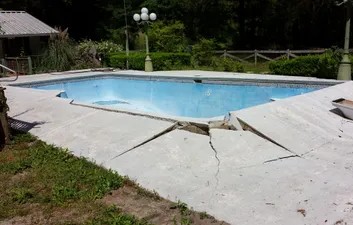When a borrower fails to obtain or maintain proper hazard, flood, or wind/hail insurance on property that secures a loan, the lender remains authorized to “force place insurance” on the property in order to protect the lender’s interest in the property. Sounds reasonable… right? On its face, it makes sense that lending institutions should have the right to make sure property securing a loan maintain adequate insurance in the event of a natural disaster or other hazard that property owners encounter.
Like so many issues with both high finance and insurance carriers, though, one can’t necessarily take force placed insurance at face value. In this initial installment of the Force Placed Insurance Series, I’ll take a closer look at issues surrounding force placed insurance.
How Does It Work?
Allowing lenders to force place insurance on a mortgaged property and charge-back the full cost of the premium to the borrower is not a new concept. For many years, standard form mortgage agreements have included provisions requiring borrowers to maintain hazard coverage1 on the property securing the loan. In the event the required insurance lapses, of course, those same provisions permit the lender to obtain force-placed insurance coverage and charge the premiums to the borrower.
On its face, again, this process would seem preferable to the lender simply declaring the borrower in default and beginning foreclosure proceedings against the property owner. Is this seemingly straightforward procedure really the manner in which the process has worked in the real world? Let’s examine what’s been recently reported regarding the force placed insurance industry.
What Property Owners Don’t Know
Ever hear the old saying “what you don’t know won’t hurt you?” While the philosophical debate regarding the underlying truth has been debated for years,2 we often see the exact opposite is true for policyholders when dealing with their property damage insurance carriers.
Property owners typically do not know that just two insurance carriers control virtually the entire force placed insurance market in the United States. Assurant (through its subsidiaries Voyager and American Security) and QBE/Balboa maintained 98+% force placed insurance market share for the years 2004 through 2011.3 Property owners also typically do not know that these insurance companies enter into exclusive relationships with the major lenders and loan servicers to provide force placed insurance coverage.
Although force placed insurance is designed to protect the lender’s interest in the property that secures a loan and thus should not exceed that interest, lenders often purchase coverage from their exclusive insurers in excess of that required to protect the lender’s interest. As a result, unsuspecting property owners are often charged inflated force-placed insurance premiums.
How Does This Affect Me?
Fortunately, class action lawsuits have been filed in recent years to expose these force placed insurance schemes. Many of these cases have been settled and compensate property owners harmed by these concerted actions between lenders and force placed insurance companies. If you represent a property owner that had to carry force placed insurance coverage for any period of time, your client may be entitled to compensation.
Motivational Poster Of The Day
1 For purposes of this entry, the term “hazard coverage” includes flood insurance (when required) and wind/hail coverage.
2 "What You Don’t Know Won’t Hurt You,” John A. Barker, American Philosophical Quarterly, Vol. 13, No. 4 (Oct., 1976), pp. 303-308.
3 CEJ LPI Presentation to National Association of Insurance Commissioners, August 9, 2012. See also, http://www.naic.org/documents/committees_c_120809_public_hearing_lender_placed_insurance_presentation_birnbaum.pdf




